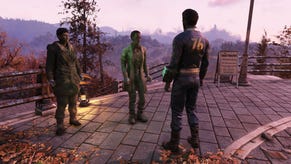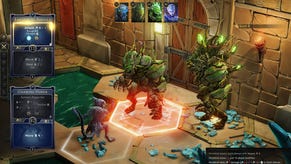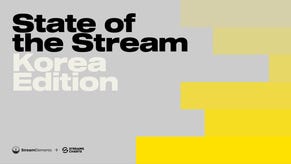Valve's flat structure leads to cliques, says ex-employee
Engineer Jeri Ellsworth says lack of hierarchy "breaks down terribly" at large scale, "no way" to make hardware within the company
Valve has made a point of its flat structure, with as little management in the company as possible. That approach empowers talented hires to pursue their own passions in theory, but one former employee says it doesn't always work in practice.
In a recent appearance on The Grey Area podcast, hardware engineer Jeri Ellsworth discussed her time at Valve, as well as the pros and cons of its (lack of) management structure.
"The idea of the flat structure works on the small scale," Ellsworth said. "Where it really, really worked well was in our group, where we had a handful of people. Their structure probably works really well with 20 people or so. It breaks down terribly when you start looking at a company of like, 300 people."
Ellsworth called the Valve Employee Handbook a "very idealized view of what Valve is like." She described the structure as pseudo-flat, where small groups of people can operate as peers who make decisions together.
"The one thing I found out the hard way is that there's actually a hidden layer of powerful management structure in the company, and it felt a lot like high school," Ellsworth said. "There's popular kids that have acquired power within the company, then there's the trouble makers and everyone in between. Everyone in-between is probably OK, then there are the trouble makers that actually want to make a difference. And I was struggling in the company to try to make a difference and make the hardware group move forward."
Ellsworth said she had a difficult time recruiting as "the old-timers" within Valve would reject them as not fitting the company culture, which led to the hardware department being chronically understaffed. As an example, she said the company had a machine shop with millions of dollars of equipment, but it refused to hire a $40,000-a-year machinist to run it because of culture concerns.
Valve's flat management structure also hurts communication within the company, something acknowledged in the employee handbook. Ellsworth said that there were resources within Valve that weren't being used, but she had no way to tap into them because there was no management layer to coordinate things. With no management in place to address employee complaints, she wound up trying to recruit people from within the company. That effort was stymied in part by the company's incentive structure, which rewards employees who work on profitable projects, at times with bonuses that exceed their base salary. Ellsworth said the result is that people are resistant to work on anything but the highest profile projects.
"It's impossible to pull those people away to work on something risky like augmented reality," she said. "They only want to work on the sure thing."
Ellsworth acknowledged some bitterness about her time with Valve, saying the company promised her the world, but failed to follow through. She was laid off in February, along with the rest of her hardware team.
"I was fired for being abrasive, and I probably was," Ellsworth said. "Because there was no way I could see to make a process to actually deliver any hardware inside that company."
Since then, Ellsworth has cofounded Technical Illusions, a company pursuing the CastAR 3D augmented reality game glasses that she had been working on at Valve.









